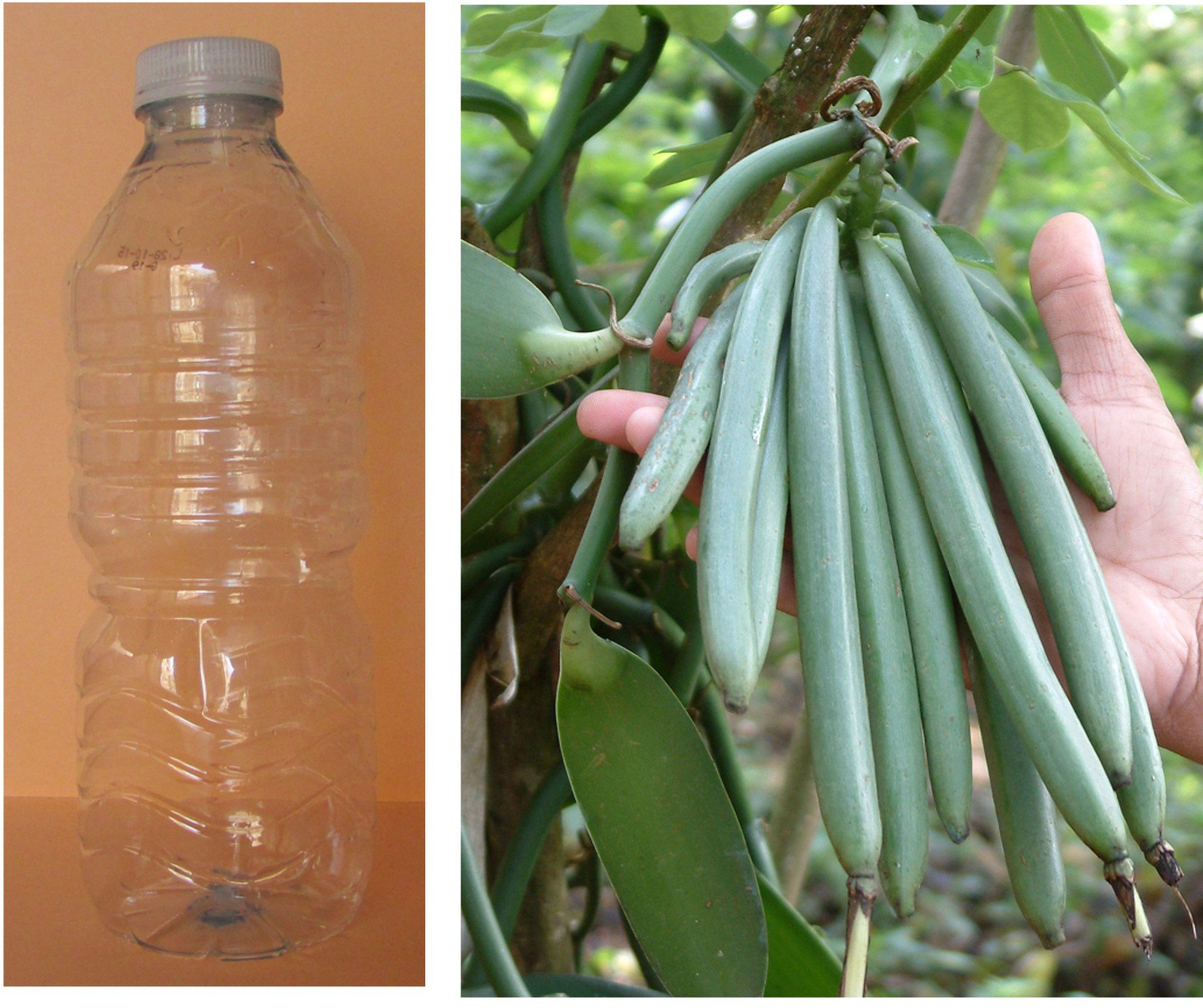
It is becoming increasingly clear that garbage is worth its weight in gold. And using it as a resource for new materials is also environmentally friendly. So, ever tasted plastic? You may soon find it as a delicious vanilla flavor in your ice cream. Three separate projects in Scotland, Germany and Poland show promise in creating useful products out of garbage: vanillin, biofuel and bioplastic.
Scientists from the University of Edinburgh, Scotland have discovered a method to make use of plastic waste. Joanna C. Sadler and Stephen Wallace have engineered E. coli for the direct upcycling of PET into a vanillin molecule.
Vanillin is normally extracted from vanilla beans or produced artificially using biotechnological methods. But both methods are expensive and cannot meet demand, so vanillin is often synthesized from chemicals produced from fossil fuels. This new production method promises to kill two birds with one stone: increase vanillin production with no increased carbon footprint and recycle plastic waste.
The process uses the bacterium Escherichia coli, commonly known by its abbreviation E. coli. There are many strains of this bacterium, found in the digestive tract of warm-blooded organisms including humans. This work represents the first biological upcycling of post-consumer plastic waste into vanillin using an engineered microorganism.
Reference: E. coli and PET bottles: Green Chem., 2021, 23, 4665
Bacteria convert dairy waste into fuel
In another development, scientists from the University of Tübingen, Germany, have developed a new process for upcycling dairy waste. The production of quark, cheese, yogurt and similar products usually produces two liters of acid whey per liter of processed milk. Up until now, it has been used in small quantities as animal feed. The remainder is often simply spread on farmland for lack of a better alternative for its disposal.
Scientists at the University of Tübingen, Germany, have now converted sour whey into fuel with the help of bacteria – without using chemicals. The process uses a bioreactor to produce fuel from acid whey-based on a so-called reactor microbiome containing various bacteria. Largus Angenent, co-author of the study, explains that “this microbiome is an open culture where bacteria from outside can also colonize, similar to the microbiome in human intestines.”
The process consists of two steps. First, the sugar in the sour whey is converted to acid. Then selected bacteria turn this acid into usable organic substances. These include animal feed or an ingredient useful in medicine because of its antimicrobial properties. The bioreactor also creates a type of oil that can be converted to aircraft fuel.

Angenent confirms that the scientists have succeeded in “creating bio-oil from bacterial production” without using carbon-rich chemicals for the conversion. If the electricity also came from renewable sources, this would create a sustainable circular economy using raw materials made from waste. The researchers want to investigate whether other industrial waste generated in large quantities can also be used to produce new raw materials.
Bioplastics from food waste in Poland
In another development, the Institute of Physical Chemistry of the Polish Academy of Sciences has developed a process that produces an ingredient for bioplastics. It is called hydroxymethylfurfural (HMF), an organic compound formed from sugars from food production waste.
According to the research in the journal Applied Catalysis B, products made from this plastic decompose much faster in nature than plastics made from conventional polymers. Juan Carlos Colmenares, co-author of the study, says that “the plastic completely disappears in nature after a few years at the latest.”
Nanocatalysts make process economically feasible
The process for creating bioplastic is already known but has not been implemented on an industrial scale. The high temperatures and complicated technology required for the process made it prohibitively expensive. But with the nanocatalysts, it is now possible to produce the building block needed for bioplastic at significantly lower temperatures and under normal pressure conditions.
Colmenares explains that this is possible because “these nanocatalysts are long and very thin, and their structure increases the absorption of light.” In fact, the reaction requires only an LED light in the UV range and oxygen from the air.
No waste
In addition, Colmenares emphasizes that the process is “a waste-free method that does not require the addition of supplemental oxygen or other additives.” The nanocatalysts can also be used multiple times. Since the experiments showed that the process is very efficient, the scientists plan to patent and further optimize the technology to produce bioplastics on an industrial scale in the future.
Also interesting:
Aviation stands to benefit from a rapid switch to sustainable fuels
TNO partner in consortium that aims at producing efficient, sustainable aviation fuels
Innovative biotechnological processes for recovering metal from wastewater
Bacteria – United in the fight against plastic waste, we are strong






